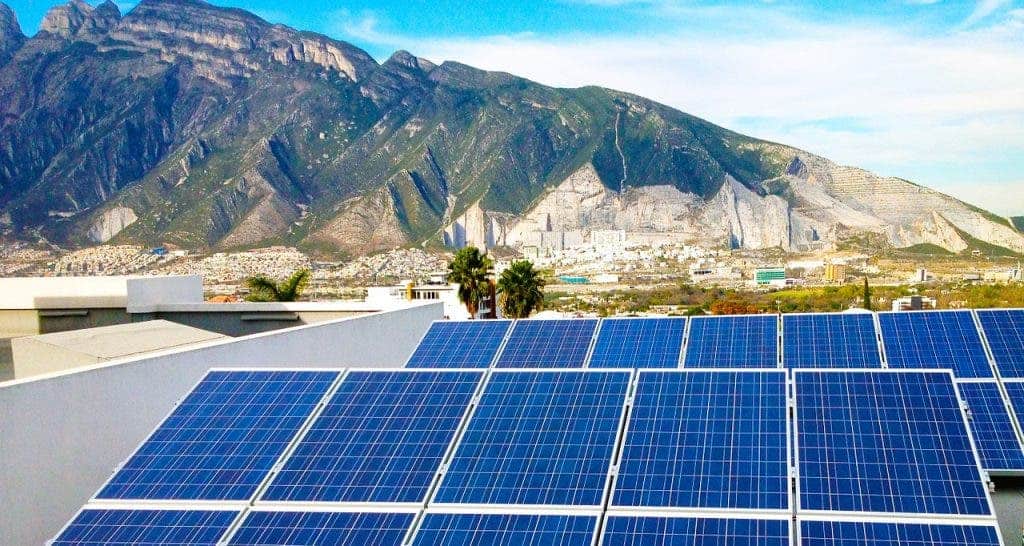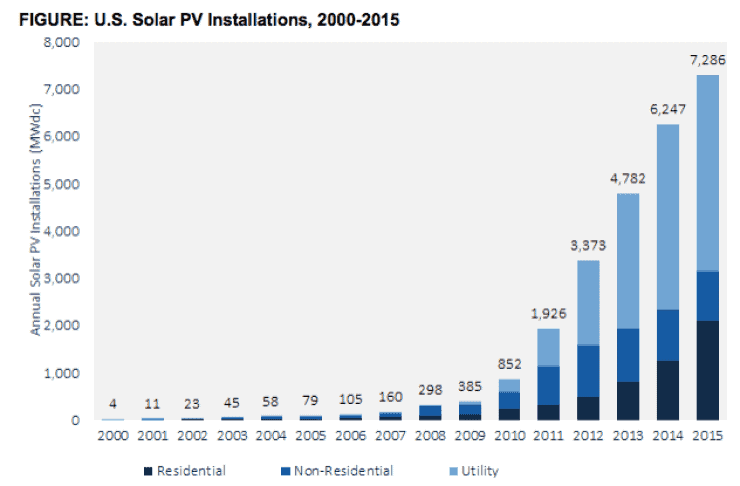A record breaking 7.3 gigawatts of capacity were added by solar energy developers last year, marking a 17% surge from 2014. For the first time, natural gas installations were also surpassed by PV arrays despite the shale boom, which says a lot about the momentum solar energy is currently gathering.
The big surprise were residential installations, which accounted for 29% of all PV installations in 2015 but climbed 66% compared to the previous year. Once again, California, North Carolina and Nevada were the top three solar energy producing states, according to the report released by GTM Research and the Washington-based Solar Energy Industries Association.
More solar installed than natural gas — a first!
In total, the U.S. now operates 25 gigawatts of solar power. That’s 25% of the entire nuclear fleet, and a massive jump from only 2 gigawatts five years ago.
The tax credits for new power projects fueled by wind turbines and solar panels have been key to the rapid expansion of renewable energy from California to Massachusetts. A lot of people were nervous last year when the scheme expired. Luckily, policy makers voted to extend the federal subsidies for renewable energy in December, 2015. The legislation allows solar power companies to keep claiming federal tax credits at 30% of the price of a solar array. The credits, which apply to home solar kits as well as big commercial installations, will be good through 2019. This credit will drop to 10% in 2022.
With this in mind, we can only expect a couple of more record breaking years. As solar energy becomes cheaper than the grid throughout the United States even without subsidies, it’s foreseeable that many more tens of gigawatts will be installed by 2022. It simply makes economic sense, tax breaks or not.











